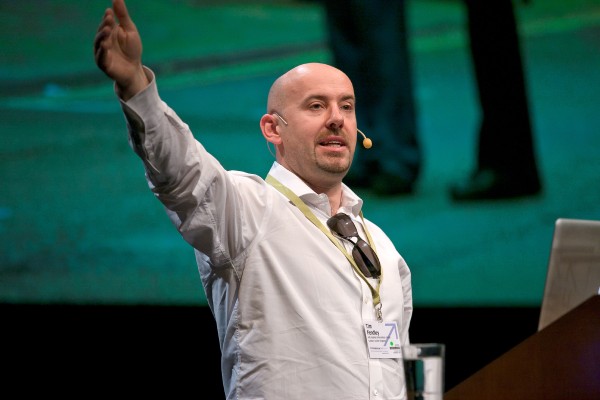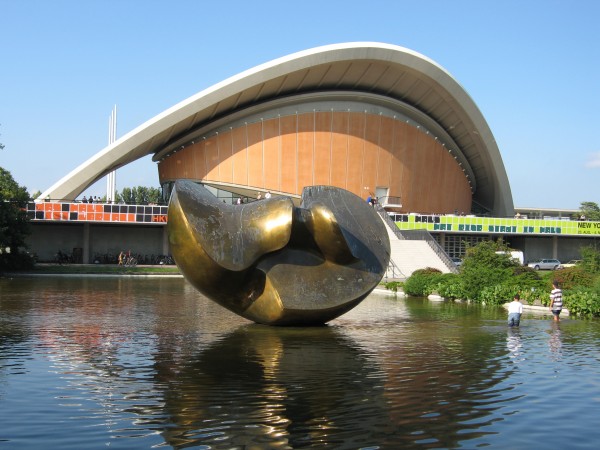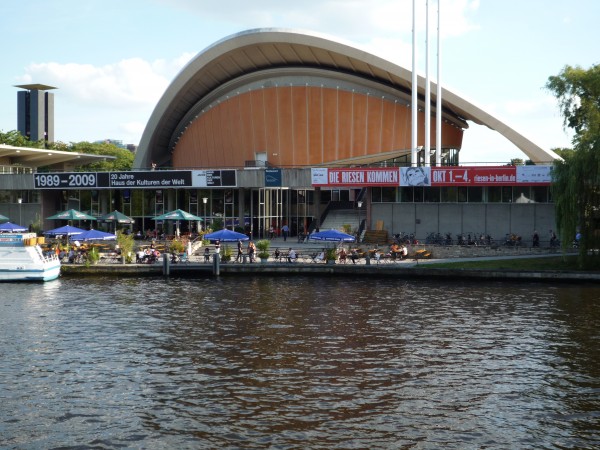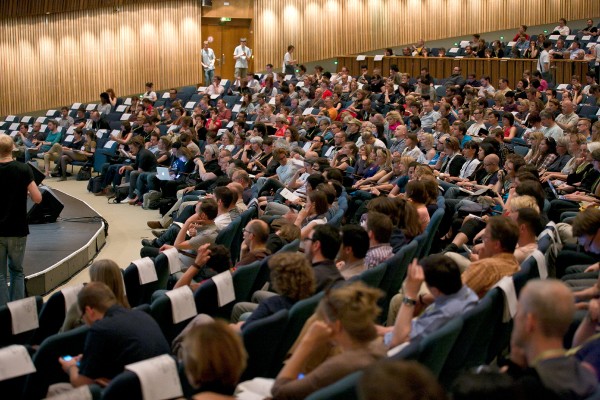During the event itself, I even watched Robin Kinross discuss anarchist publishing concepts and Petr van Blockland muse over the future for designers as keynotes via the livestream service on the TYPO Berlin website. The first viewing was in the foyer at the Kongresshalle itself, the latter in the stuffy confines of my Wilmersdorf hotel room, as I tested the capabilities of the feed externally. Of course all of this virtual correspondence and the opportunity to see speakers post presentation reflections on You Tube (try Michael Johnson for example), great as they undoubtedly are as are as a reference, are nothing compared to the real thing.

Tim Fendley
I can even say that even having worked with Tim Fendley, founder of Applied Information Group and future speaker at TYPO London, for ten consecutive years, that I learned a great deal from watching and listening to his presentation on the Legible London project. For many people signs are… well just signs. Ubiquitous and authoritative, their very placement and implementation implies that they are the last word on directional information and a sense of place. Tim’s presentation quickly established otherwise. In fact I’m not sure I can look at another sign without questioning the usefulness of the information contained within it now. I’m now aware of a process that we as humans go through to understand where we are and where we’re going, with Tim linking the mental models people build to understand to an area of the brain that stores directions and information concerning place, directions and locations. If you have ever traveled in an official black London taxi, your driver will have passed a test called ‘the knowledge’ which enables him/her to find the quickest and most economic route from the point of pick-up to the desired destination. According to Tim’s research London cab drivers have been found to have an enlarged area of the brain where this information is stored. So the moral of this story is that when in London, use the public transport system, walk using Applied Information Group’s designed maps placed on mono or miniliths in the street, or take a black cab when you come to TYPO London 2011 “Places”.
TYPO Berlin is not so hard to find. Set in the Haus der Kulturen der Welt, on the edge of the Spree and the Tiergarten it was designed in 1957 by the American architect Hugh Stubbins Jr. The hall is famous for hosting John F. Kennedy and was the United States gift to a divided cold-war Berlin. A magnificent venue and modernist icon, the building was known by a previous generation as “Kennedy’s Smile”, to modern Berliners as “The Pregnant Oyster” and to politicians as the Kongresshalle. Within this context, TYPO Berlin was its usual fantastic eclectic mix of presentations and is highly recommended for anyone wanting to see Berlin in the spring.























